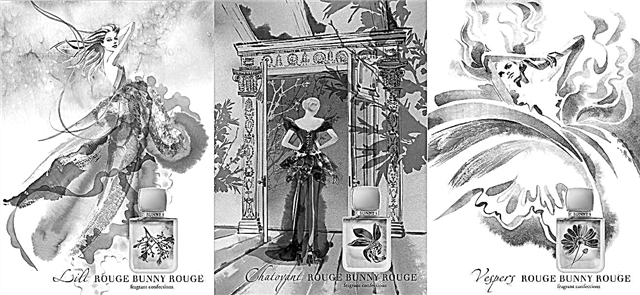Share
Pin
Tweet
Send
Share
Send
The ability to design a product directly on a mannequin using only fabric and tailor pins is the highest level of skill.
The technique of creating clothes by tacking a fabric on a mannequin is called moulage, from the French - template, pattern. All famous designers use this method. Fashion collections are the physical embodiment of their ideas.
While working with paper patterns, you will not see how the dress will look in reality until you sew it. And working with a mannequin, already at the very beginning, the future result will emerge. You stab the fabric, clearly modeling the silhouette. Correct possible errors long before fabric cutting. And only then transfer the pattern to paper.
The method of tattoos requires a lot of experience, but at the same time there are several simple tricks that have remained unchanged since the beginning of the twentieth century, when Wolf Form Company introduced the first tailor's dummy. These are basic sewing skills and experience in creating patterns.
Designing products on a mannequin by means of tattoos allows you to create new unique forms, to find new opportunities. Through experiment, sometimes an absolutely incredible result is achieved. What they just don’t do with the fabric, they twist it, bend it, cut it, chop it into unthinkable draperies to create something truly original.
Trust your inspiration and try your hand.
Materials, tools necessary for the implementation of your own project:
Dummy

- Choose the one that best suits your size. The best mannequins that are mounted on a metal base.
- Before working on a mannequin with the help of cotton braid, it is necessary to mark the lines:
- breasts - lay the tape along the most prominent points of the chest, and from the back parallel to the floor and stab it;
- waist - usually on the mannequin there is a "seam" that indicates the waist, lay the tape on it. If there is no such “seam”, wrap your dummy with tape in its narrowest part;
- hips - I usually place it 18 cm below the waistline.
- Measure the girths obtained on the dummy and write them down so you can always compare them with your sizes and make the correct adjustment.
The cloth

To create a prototype of a future product, it is best to use flesh-colored chintz. It is used in the fashion industry. This material lays well, is malleable and does not lose shape in work. Chintz is soft, it is easy to cut, tear, drape and pin it on a mannequin. In addition, it is inexpensive, so you can not be afraid if the idea fails the first time.
Tip: when the prototype of the future outfit is ready, look at it in the mirror. This will allow you to see your idea from a new angle and understand whether it exactly matches your ideas.
Core tools
- A centimeter is required when taking measurements, measuring fabric.
- Scissors are the most important tool.Their choice should be taken very seriously - they should be light, comfortable, sharp without burrs and evenly cut the fabric.
- The tailor's meter is used for marking the share, duck and oblique direction.
- The transparent ruler with a marking is convenient for a marking of allowances for seams and parallel lines.
- Pencil or marker - choose any water-soluble, disappearing, most importantly, before using it, test it on a piece of cloth.
Marking Tools
- Tailor's chalk of two colors, so as not to get confused in the markup.
- Two-color pencils are used for marking when the fabric is removed from the mannequin. Corrections are made in one color, the final lines are drawn in the second.
- Carbon paper - with its help it is easy to transfer the necessary lines to the back of the fabric or to another fabric.
- Cogwheel is an alternative to carbon paper.
- Threads and needle - also used for marking fabric.
Drapery Tools
- Tailor pins with a needle bar - you can use the simplest pins, but the needle bar is more convenient than the one that can be attached to the wrist - the needles will not get lost and will always be at hand.
- Cotton braid is used to mark the neckline, armholes, reliefs. Here, for temporary marking or for corrections, you can use adhesive tape, for example, red.
- Elastic tape of different widths will help you in creating assemblies on the fabric.
- A ruler with a slider is very convenient for precise bending.
Patterns
- Small transparent rulers with a marking will allow you to mark out allowances and see those that you made earlier.
- The French pattern is ideal for modeling. It is distinguished by concave and curved lines.
- The tailor's pattern of universal form is traditionally used to create embossed lines.
- Pattern for hemings - a narrow curved pattern, with its help you can easily mark out, for example, the hem of a fluffy skirt.
Having gained experience, thanks to which sewing skills become confident, and the desire to grow further is rapidly gaining momentum, almost every needlewoman catches herself thinking, try to create something of her own, thought up somewhere in the halls of a creative mind. Why not, go ahead and don't forget to share your results on the photo forum.
On our site you will find master classes in design for beginners:
Building a straight skirt
How to build a sheath dress
How to build a set-in single-seam sleeve
How to sew a sun skirt
In addition, from our workshops you will learn how to make a mannequin with your own hands and simulate a corsage on it.
Photo: pinterest.com
Material prepared by Julia Dekanova
Share
Pin
Tweet
Send
Share
Send



